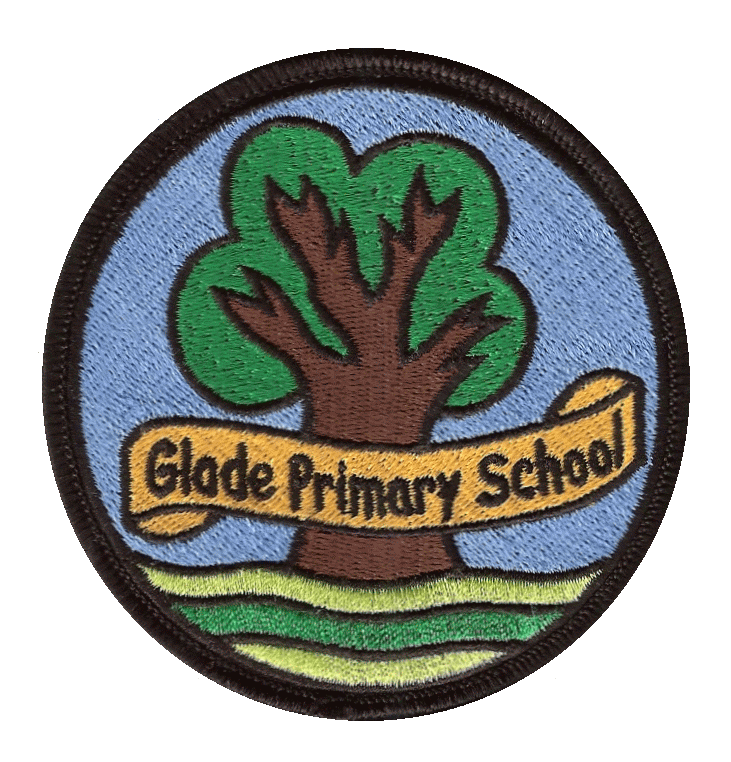Joining Mrs Hussain for Afternoon Tea on 11th October were:
Olivia 1M, Aiden 2R
Elizabeth 3R, Harsha 4A
Jaiden 4M, Eva 6E
It was encouraging to see children proudly sharing their work with everyone at the tea. Jaiden said he wants to become a Head teacher when he grows up (so, watch this space!)
Topic Webs

School Office: 020 8708 0200 - Office Email: Parentinfo@glade.redbridge.sch.uk
Translate
PE (Physical Education)
Long term plans (Download)

PE (Physical Education)
Intent
At Glade, Physical Education is a valued part of our broad, balanced and diverse curriculum. The subject allows our pupils to be engaged in high intensity physical activity at least twice a week. Our high-quality physical education curriculum inspires all pupils to succeed and excel in sport and other physically demanding activities. It teaches core skills and builds on these, allowing children to apply their knowledge in competitive sport both in and out of school, evaluate their performance and work collaboratively with others. We provide many opportunities over the course of an extended school day for pupils to be physical in a way which supports their health, fitness and mental well-being and helps to embed values such as fairness and respect.
Implementation
PE is taught at least twice a week by the class teacher and/or specialist PE coaches. Lessons follow the requirements of the National Curriculum and taught using the Rising Stars Champions scheme of work. Suitable adaptations are made to ensure that lessons are challenging and promote and support all children’s physical needs. An active lifestyle and related global goals such as pollution control are also promoted, as evidenced through our recently awarded TfL STARS Gold Award.
In early years, PE focuses on basic physical development, movement, balance, coordination, and sequencing skills/activities. This takes place throughout the school day and is part of all learning activities in addition to 2 discreetly taught PE sessions.
In Key Stage 1, we look to build upon these skills and start to work towards applying them to competitive situations. Children will learn to apply fundamental skills like throwing and catching in isolation, and as part of a small team. They will extend their range of movements from basic running, jumping, hopping and skipping - to a variety of different skills on multiple levels through athletics, gymnastics and dance.
In Key Stage 2, the children further develop these skills and start to embed them in a more sporting context. Dance and gymnastics look to stretch their creative skills, enabling them to develop increasingly complex sequences of movements and to engage their ability to use differing styles, techniques and attitudes. Athletics supports in improving their understanding of their own body, physiology and developing best techniques to be competitive with running, jumping and throwing events. Games lessons focus on implanting the basic skills they learn into a competitive context and then extending that with an understanding of planning and tactical play.
Impact
PE gives children the opportunity to be active every day. Physical activity has many health benefits, for both the mind and body. As well as the obvious knowledge and skills learned during PE lessons, PE can also help children feel happier, as physical activity has been proven to increase and improve the mood and mental wellbeing of children when they are physically active. Being more physically active will also help with the ever-increasing obesity issue that affects our schools, by helping and encouraging children to be more active and physically fit. It has been shown that through exercise, muscles and bones are strengthened which will have an impact on their growth, as well as giving them a healthy foundation to take them into later life. By participating in PE and sport, children learn the importance of exercise as a life-long habit. In reaction to being more active, children will relax and sleep better allowing the body to repair and regenerate. Research shows that physical activity supports children’s emotional well-being and their ability to be more active learners in all other aspects of school and class based learning. Taking part in physical activity, PE and sport makes our children more rounded people, both physically, mentally and socially, developing life skills that will last with them forever.
The impact of PE is measured through pupil interviews, teacher/coach evaluations, data regarding active travel to and from school, attendance at sports clubs both in school and out, and from performance in competitions.

